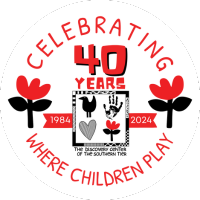Dear Discovery Center Friends and Families,
I am thrilled to be the new Executive Director of The Discovery Center. Each day, I see children learning about their world through exploration and play. The Discovery Center creates an environment where child’s curiosity is celebrated. We know that young children need these opportunities for their physical, social, and emotional health and development.
It is critical that in addition to special events and activities, we use every day to talk with our children. The way we use words can help children increase their curiosity, build stronger thinking and organize their world.
Tanja Mcilroy writes about child development, and she shares one of my favorite games.
Did you ever play the I spy with my little eye game as a child? This game is a favorite in homes and preschool classrooms, for good reason.
It’s a great game to play to boost a child’s concentration, teach them to listen carefully and stimulate their thinking skills.
You can also use it to practice colors, shapes and even build sound awareness.
How Do You Play I Spy with My Little Eye?
What are the rules of I Spy? Indoors or outside, an adult often begins the game. As the person selecting an object, you are sometimes called “The Spy.”
You look around the area and focus on an object within view of the other players.
Once you have chosen your object, say, “I spy with my little eye…,” and then offer the first clue. Some “spies” make a circular “spyglass” or monocle with the fingers of one hand, for fun viewing, or with two hands to imitate binoculars.
For young children, you may want to look in the direction of the object as a partial clue. For older preschoolers, be careful not to look right towards the article.
Once an object is chosen and a clue given, it should not be changed until after it has been guessed.
Your child guesses according to the clues you have given. You answer “yes” or “no,” as to whether their guess is correct. When more than one child is playing, they take turns guessing.
If you want, you can also let players ask “yes” or “no” questions, like, “Is it here in the living room?” or “Is it on my left?”
In addition, if players are having difficulty finding the answer, The Spy can offer clues like “hot” and “cold,” as to how close the players are coming to the correct answer.
The player who guesses correctly is the next one to give clues as The Spy for a different object.
If you would like to learn more about playing Eye Spy please visit this link: How to Play “I Spy with My Little Eye”+ 72 Examples – Empowered Parents
Wishing you a fall filled with adventure,
Dr. Brenda Myers
Executive Director







